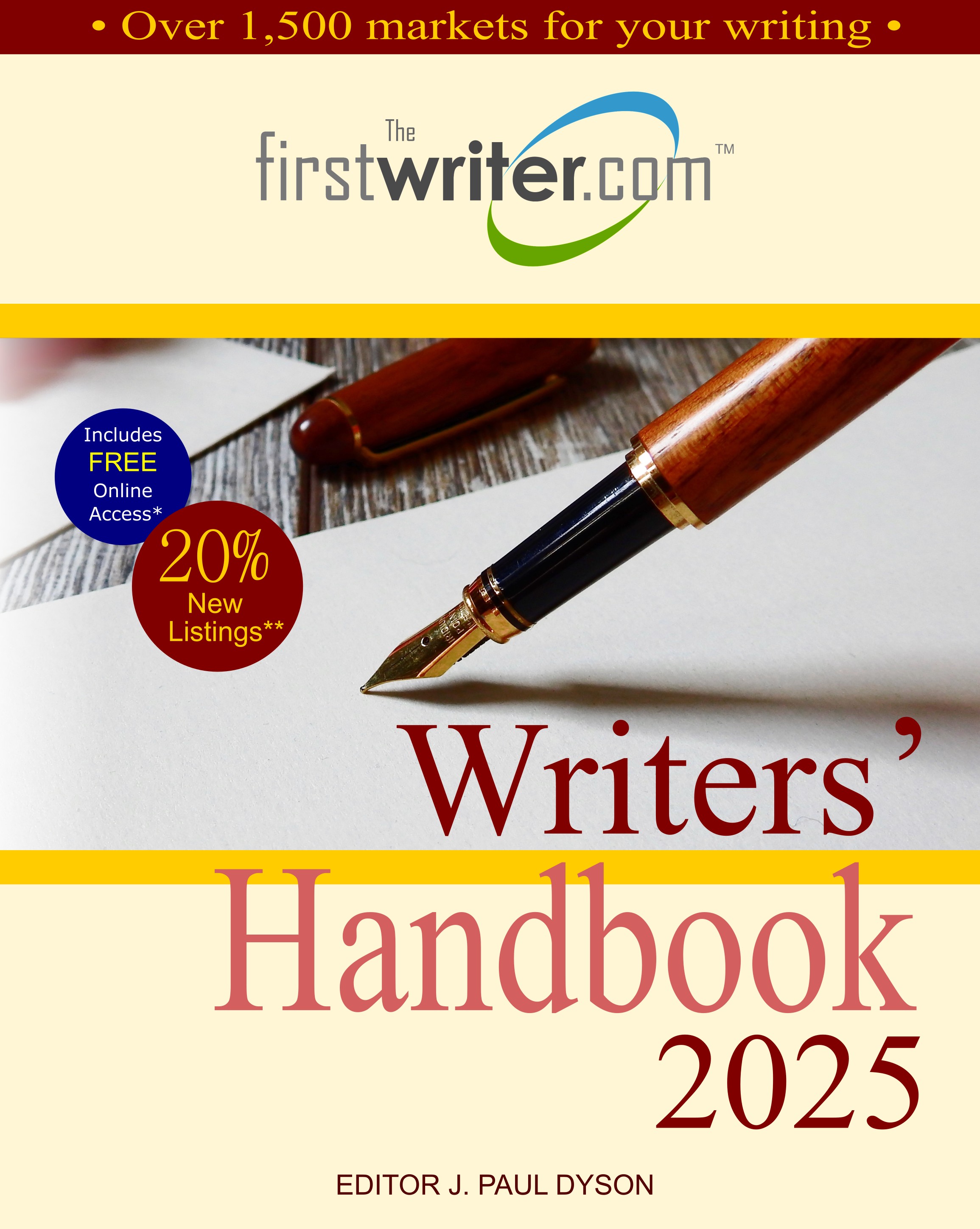
Writers' Newsletter
Issue #204
March 2020
|
Ways to Describe

By G. Miki Hayden
Instructor at Writer's Digest University online and private writing coach
firstwriter.com – Tuesday February 25, 2020
One important job of the author is to describe what the reader can’t see (smell or taste, etc), and that includes a description of the point of view character even if the novel is in first person; descriptions of other characters from the first person character’s point of view; and descriptions of the setting, both the macro setting (the city, for instance, but maybe the neighborhood and/or the house) and the micro setting (such as the home interior or a room in the house). Not to mention everything else, the dinner, the restaurant, the music, the crowd, the scent in the air, well everything...
And my point, which is fast coming up, is that we’ve all had various experiences of life, and though we don’t know what the exact items in your novel look like, we pretty much have a certain set of expectations. As such, the author can both rely on this predictability, and can at other times turn the predictable on its head. Being changeable in your descriptive approach doesn’t have to always take place. But that depends on what you, the author, are trying to achieve—and can serve as a tool in the writer’s, uh, toolbox.
In relying on what is already known in our common universe, the author can use this set of reader suppositions to sketch out descriptions and not dwell on the details. We don’t have to trouble ourselves to go into describing what the airport in Gotham City is like, perhaps. Just saying the terminal is jammed with holiday travelers or that Cindi can’t find a seat in the waiting area might be sufficient. A person meant to be noticed can be detailed a bit more, however—the tribal-looking woman (later a murder victim—or a suspect?) has faint ink markings on her forehead that interests the sociologist in Cindi.
Well, I could go on, but I won’t, and neither will Cindi, who perhaps contrasts her own appearance with that of the person who seems to be from the Middle East. Cindi says that she herself is “plain as dirt, indistinguishable from hundreds of thousands of others like her from the Midwest, though she has a cheery cast to her features, and men her age seem to find her attractive.”
Thus authors can use both the common and the uncommon in describing. But wait, that’s just a start.
The common:
The traffic wasn’t heavy and Larry made it from 80th and Jackson to 12th and Thunderbird in under 20 minutes. (Though we don’t really need to always step Larry through his travels, and we can actually just bring him to the main offices of Pratt and Finch without wrinkling his jacket in the car.)
Jolene was a blonde and subject to all the hair and male-harassment trials of those of her ilk who were also pretty, petite, and under thirty.
The three bedroom and two bath house of 1,400 square feet was crammed to the gills with Wal*Mart furnishing from the 90s and five young men studying engineering at down-the-block Waymont College.
Though based on accentuating the common, all these descriptions are also distinctive and with a certain amount of writerly impact.
Why would you want anything more? Well, not every protagonist or every meal or every airport will be commonplace
The uncommon:
They came to John’s house and entered in through the vestibule, where a male servant greeted them, a young Jew who spoke Aramaic but was dressed in a Roman-style mantle. The two cousins removed their dirty shoes and put on clean house slippers, then went into the lounge where they sat on wide, cushion-covered benches next to an open-roofed atrium. On the other side of the lounge was an outdoor garden with fountains and sculptures of fish and birds.
A serving woman brought in bowls of water for the cousins to wash their hands and the man followed with a tray that held olives, figs, bread, cheese, and a pitcher of some sort of juice that Jesus suspected would be pomegranate. He was right.
Every day, Miriam rose at 5:30 a.m., saw to her grooming, ate dinner leftovers, put on one of her three simple work dresses with a pair of sandals, and left the house. She walked along packed-dirt roads to the part of town that had been paved by the British and thus was hotter in the heat of the day than her own neighborhood. Here, she washed and cleaned during the morning with the radio tuned to an Arabic station, as Miriam was afraid if she moved the dial she’d never find her employer’s frequency again.
She roared off of a runway not quite long enough for absolute ease—probably about three thousand feet—a tight squeeze, but doable. Up above was a Hawker 1000, a corporate jet that had taken off immediately before her. The Hawker could fly non-stop New York to Los Angeles. The range of the jet she was flying today was about half of that.
She climbed to thirty thousand feet and stabilized, heading in a southwest direction. From time to time, Helen glanced at the radar screen, but she also kept watch visually through the window for other aircraft. This close to several major airports, the skies could be crowded. Although no one was supposed to be at the same altitude in this flight “lane,” the correct procedure was to stay on the alert. Flying could be a lot like defensive driving in a car; you never knew how well trained—or how untrained—the other pilot was. You kept your eyes open.
Yes, I wrote all the above, pieces not as detailed as they might be, but each telling a specific story. No, I’ve never been to Jerusalem at the time of Jesus, never been to Ghana, and never flown a plane. So how do we describe in a specific way what we don’t actually know?
We do research, if we need to. That is, we search a setting, a meal, what people from a certain part of the world might look like. Or we invent—such as what the inhabitants of the star system 70-million light years from earth might look like.
If we research, good for us. We’ve learned a lot. But we don’t have to put every fact we’ve acquired into our description. A certain type of shutter might be one foot by four, but who cares. We just want to describe the look of the house and its impact on the protagonist seeing it for the first time.
This was her new house, and the shutters, painted a rich royal blue, drew her eyes immediately. Gloria knew she was going to be happy here.
So the look of the house, the description, is integrated with the character’s emotion. Description is meant to make the construction of the home, the meal, the settings, the locale real so we feel that we can see, smell, hear the other parts of the story—the action, the faces, the reactions of the characters.
Let me repeat that we must integrate description with other facets of the story. We don’t just want to say: “The living room had two red area rugs, a couch, two end tables, and three armchairs.” We want to say that Ernie found the two red area rugs out of place, contrasting oddly with the dark-yellow couch. That together with the two end tables and three armchairs reminded him of the dayroom at the drug rehab center where he’d stayed for two months when he was in his twenties. His stomach roiled.
Since I myself don’t write the most sophisticated descriptions in the world, I’ll share one with you from the novel I’m reading now.
“Dinner over, Helena carried the coffee tray to the terrace, where the light was fading. The sky ran from a grainy navy in the east to a strange citrus-green behind the spinney, where the trees were already a compact black mass. Beyond the stone balustrade, the lawns, their finely shorn texture becoming indistinct, stretched toward the blurred hollow of the water garden. Marta brought out a candle and placed it on the table. Richard poured out brandy, Simon lit a cigar.” From Death in the Garden by Elizabeth Ironside (the pseudonym of Lady Catherine Manning), 1995.
Nice writing.
About the Author
G. Miki Hayden is a short story Edgar winner. She teaches a mystery writing and a thriller writing and other writing classes at Writer's Digest online university. The third edition of her Writing the Mystery is available through Amazon and other good bookshops. She is also the author of The Naked Writer, a comprehensive, easy-to-read style and composition guide for all levels of writers.
Miki's most recent novel out is Respiration, the third book in her Rebirth Series. The New York Times gave her Pacific Empire a rave and listed it on that year's Summer Reading List. Miki is a short story Edgar winner for "The Maids," about the poisoning of French slave holders in Haiti.
"Holder, Oklahoma Senior Police Officer Aaron Clement is out for justice above all, even if he irritates the local hierarchy. Hayden in Dry Bones gives us nothing-barred investigation and plenty of nitty-gritty police procedure—which makes for a real page turner." — Marianna Ramondetta, author of The Barber from Palermo
|
|
|
|
|
|
|
|
International Copyright RegistrationRegister your copyright online for instant copyright protection in more than 160 different countries worldwide. |
News |
Some of this month's news for writers from around the web.
As Print Book Sales Fall, Publishers And Others Offer Free Ebook Deals

forbes.com – Saturday March 21, 2020
Bookstores and libraries have been closing down as well-justified cautionary measures in response to the growing COVID-19 pandemic. The impact on physical copies sold has been swift: Print unit sales dropped 10% within just a week, according to stats released yesterday from NPD BookScan.
But a wide variety of library programs, online ebook services, and publishing houses large and small have debuted special coronavirus-spurred deals to compensate. Here’s a quick non-comprehensive overview of the ebooks and audiobooks that you can now read online or download — totally for free.
Writers' Handbook 2025 - Out Now!
|
Winchester Poetry Festival launches best new writing competition

hampshirechronicle.co.uk – Sunday March 15, 2020
AN ANNUAL poetry competition celebrating the best in new writing for 2020 has been launched.
The Winchester Poetry Prize is organised by the Winchester Poetry Festival and is open to poets from around the world.
This year’s entries will be judged by Andrew McMillan, whose first collection, physical, was the only poetry collection to ever win The Guardian First Book Award and was the Poet in Residence at Basingstoke Discovery Centre in 2012. He is also a senior lecturer in the Manchester Writing School.
‘Harry Potter’ publisher’s stock climbs as Britain’s chancellor waves his magic wand

marketwatch.com – Thursday March 12, 2020
Shares of the “Harry Potter” publisher Bloomsbury Publishing rose almost 5% after British Chancellor Rishi Sunak scrapped a “reading tax” on e-books — as investors hoped the move would conjure up more sales.
Announcing the news in his first budget on Wednesday, Sunak said the 20% levy on digital publications, including books, newspapers, magazines and academic journals, will be scrapped from Dec. 1 in time for Christmas.
Sunak said a world-class education will help the next generation to thrive. “Nothing could be more fundamental to that than reading. And yet digital publications are subject to VAT. That can’t be right. So today I am abolishing the reading tax,” he said.
| Click here for the rest of this month's news > |
Listings |
A selection of the new listings added to firstwriter.com this month.
New Magazine Listing
firstwriter.com – Monday February 24, 2020
Publishes: Essays; Fiction; Nonfiction; Poetry;
Areas include: Short Stories;
Markets: Adult;
Preferred styles: Literary
Accepts submissions of flash fiction up to 500 words, short stories and creative nonfiction up to 4,000 words, or up to five poems, by email. See website for full guidelines.
|
|
|
|
|
|
|
|
New Literary Agent Listing: Kerry Glencorse

firstwriter.com – Monday February 24, 2020
Always on the lookout for new talent, especially in the areas of literary and upmarket commercial fiction; well-written genre fiction, including crime, thrillers, women’s fiction, and historical. And on the non-fiction side: memoir, narrative non-fiction, popular science, natural science, social and cultural history.
|
|
|
|
|
|
|
|
New Publisher Listing
firstwriter.com – Thursday March 19, 2020
Publishes: Fiction; Nonfiction; Poetry
Markets: Adult
Preferred styles: Literary
Publishes books of literary fiction, nonfiction, and poetry. Accepts submissions through competitions and open submissions ($25 submission fee) via online submission system.
|
|
|
|
|
|
|
|
| Click here for more of this month's new listings > |
Articles |
Some of this month's articles for writers from around the web.
Shakespeare in lockdown: did he write King Lear in plague quarantine?

theguardian.com – Sunday March 22, 2020
While those of us stuck in self-isolation or working from home watch TikTok videos and refresh liveblogs, a meme has been going around that claims Shakespeare made use of being quarantined during the plague to write King Lear. The Bard supposedly took advantage of the Globe’s lengthy closure to get on top of his writing in-tray – coming up with Macbeth and Antony and Cleopatra to boot. If you weren’t panicky enough about how little you’ve achieved recently, this is surely a way to feel worse. Why aren’t you finally dusting off that novel or screenplay you’ve been itching to write? It’s what the Bard would do, surely.
How to publish a book: The publishing process, explained

goodhousekeeping.com – Saturday March 14, 2020
You've had the killer idea, you've developed your book characters, planned and plotted, and found the motivation to finally write the novel you've always dreamed about.
You may even have found an agent. But when it comes to a publishing a book, how does the industry actually work?
There are so many stages, so many edits and buzzwords - it can feel impossible to navigate. Before my first novel, Five Steps To Happy, came out last year, I felt utterly lost, confused about the role of an editor and full of questions about the publishing process.
If you feel the same, fear not. In this piece I'll explain the publishing industry, rounding up the people who know to answer the most common questions about writing a book.
How to publish a book: Finding an agent

goodhousekeeping.com – Saturday March 14, 2020
Publishing a book can feel like a minefield. There are so many ways to go about it - from the traditional agent and publisher route, to entering writing competitions to self publishing.
Before my first book, Five Steps To Happy came out last year, I was pretty much clueless as to the process. I took a 3 month novel writing course with Curtis Brown Creative, which offered a valuable insight into how the industry works.
A couple of years (and a lot of rejections) later, I signed with literary agent Richard Pike, at C&W, Curtis Brown's sister agency. My novel was bought by Trapeze, an imprint of Orion - and my dream came true.
Going through the process first-hand, I've gained a lot of useful knowledge. Burning questions about where an agent fits in with publishing a book? Read on!
| Click here for the rest of this month's articles > |
About |
Information about this newsletter and the firstwriter.com site.
Resources for writers
Go to firstwriter.com for the following invaluable resources for writers:
Advertise
To advertise on this newsletter for as little as $30 / £20 click here
Submit
To submit articles, news items, press releases, or any other items of interest to writers, click here
This newsletter has been compiled by firstwriter.com and is protected by copyright. It may not be copied, forwarded, or otherwise distributed in whole or in part without firstwriter.com's written consent.
While every effort is made to ensure that all information contained within this newsletter is accurate, readers are reminded that this information is provided only as a list of potential leads that the reader should follow up with his or her own investigations. Unless otherwise stated, firstwriter.com is not associated with and does not endorse, recommend, or provide any assurances relating to any of the organisations, events, persons or promotions contained within this newsletter, and cannot be held responsible for any loss incurred due to actions taken in relation to information provided. Inclusion does not constitute recommendation.
Please do not reply to this email. The address from which this has been sent is not capable of receiving emails and sending an email to it may cause your subscription to stop. If you have any queries or require any assistance please contact us by going to https://www.firstwriter.com/contact_us.shtml
© firstwriter.com 2020
